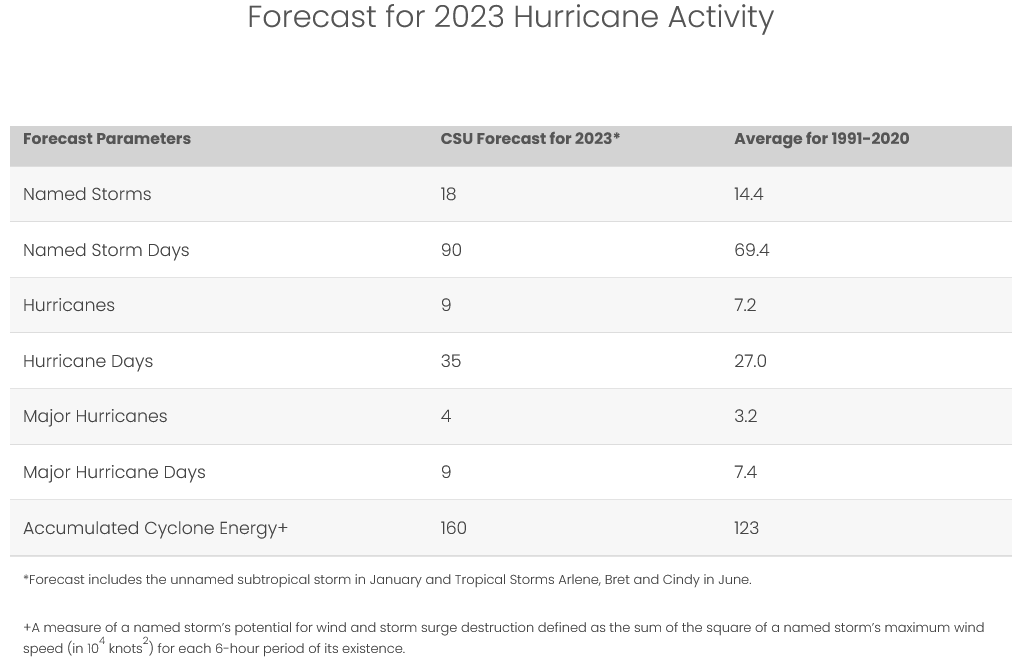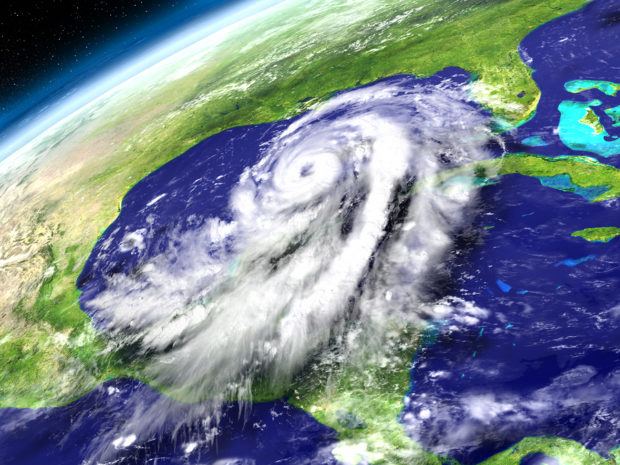Colorado State University (CSU) hurricane researchers have upped their hurricane season forecast. An above average Atlantic hurricane season is now expected for 2023, though there is a greater level of uncertainty than normal.
A robust El Niño is still expected for the peak of the Atlantic hurricane season, with most of the tropical and subtropical Atlantic at record warm sea surface temperatures.
El Niño increases vertical wind shear in the Caribbean and tropical Atlantic, according to CSU, but the extreme anomalous warmth in the tropical and subtropical Atlantic may counteract some of the typical El Niño-driven increase in vertical wind shear.
The CSU team now predicts 18 named storms, nine hurricanes and four major hurricanes – those with a Saffir/Simpson category of 3-5 and sustained winds of 111 miles per hour or greater.
The updated forecast is an increase from the 15 named storms, seven hurricanes and three major hurricanes they predicted on June 1.
The forecast includes an unnamed subtropical storm in January and Tropical Storms Arlene, Bret and Cindy in June.
Long-term seasonal averages are 14 named storms, 7 hurricanes and 3 major hurricanes.
Researchers indicate the probability of U.S. major hurricane landfall is estimated to be above the long-period average.
An updated forecast will be issued on August 3rd.






















 Chubb, The Hartford, Liberty and Travelers Team Up on Surety Tech Co. Launch
Chubb, The Hartford, Liberty and Travelers Team Up on Surety Tech Co. Launch  Executives on the Move at HSB, American Modern Insurance Group, AIG
Executives on the Move at HSB, American Modern Insurance Group, AIG  Rebuilding Negotiation Talent: Why This Skill Is Missing and How to Fix It
Rebuilding Negotiation Talent: Why This Skill Is Missing and How to Fix It  Acrisure to Buy MGA Vave From Canopius
Acrisure to Buy MGA Vave From Canopius 